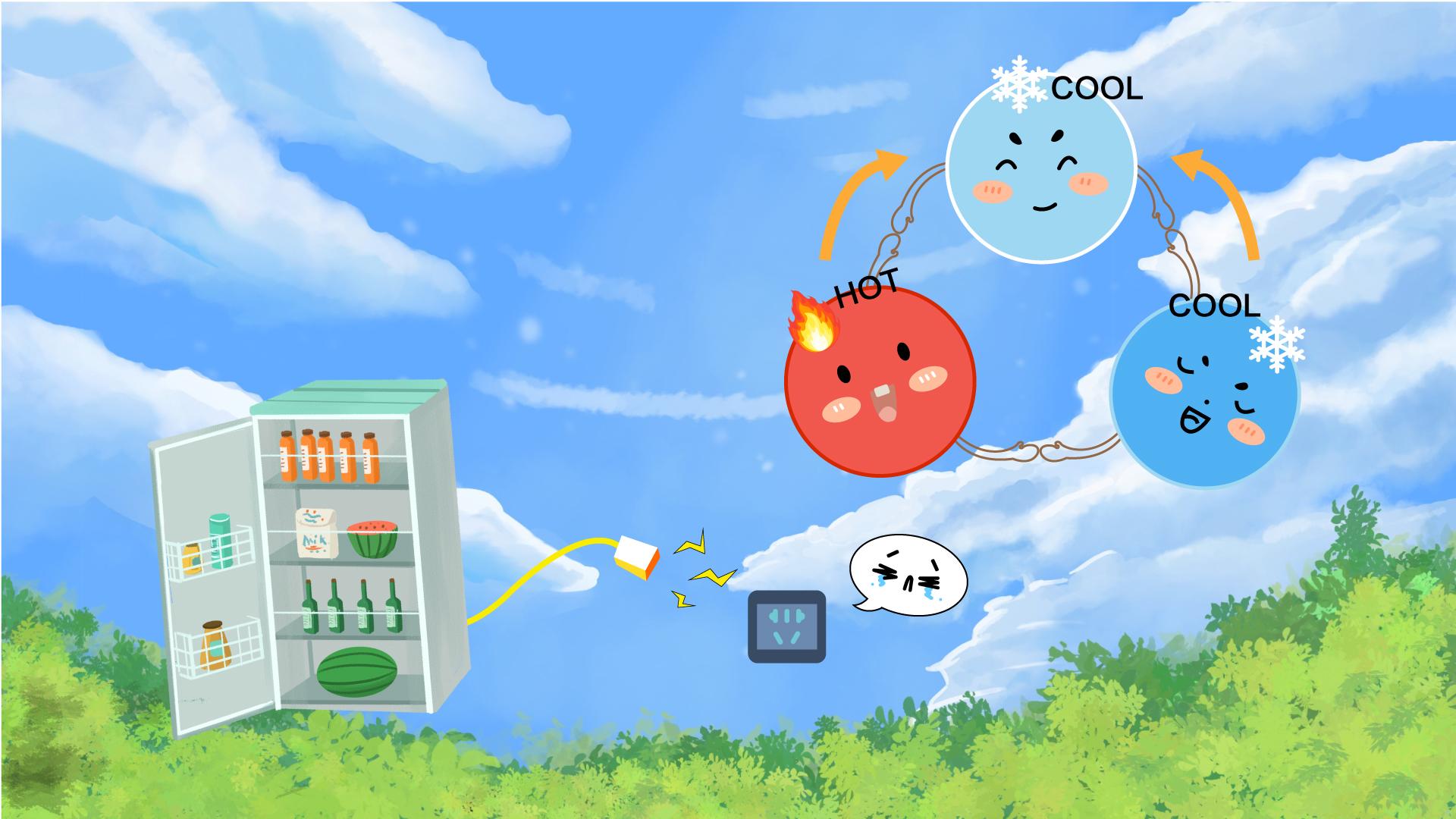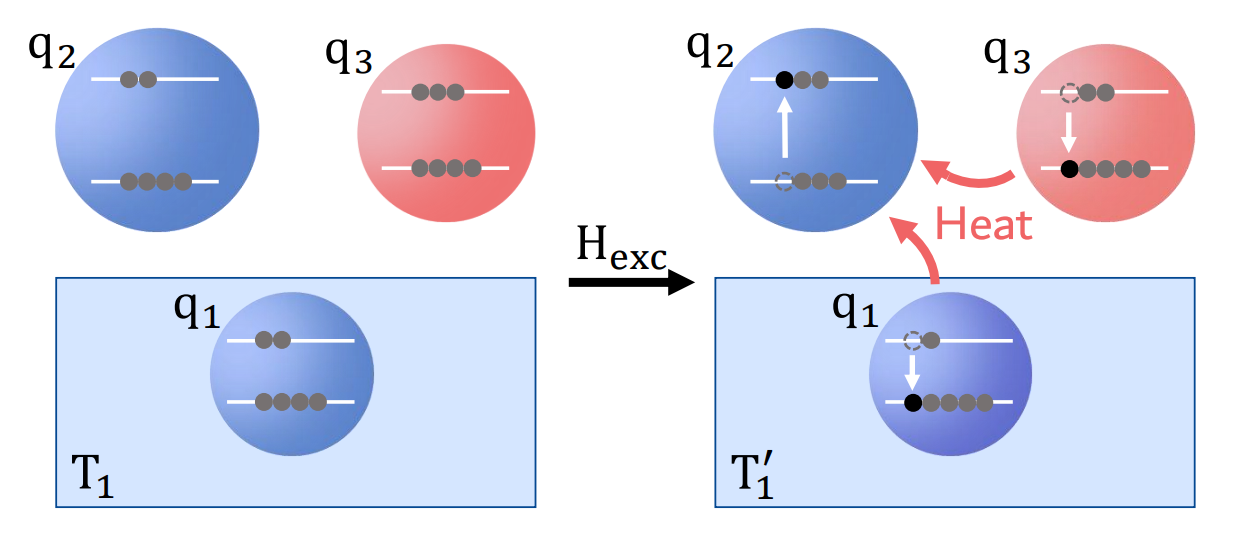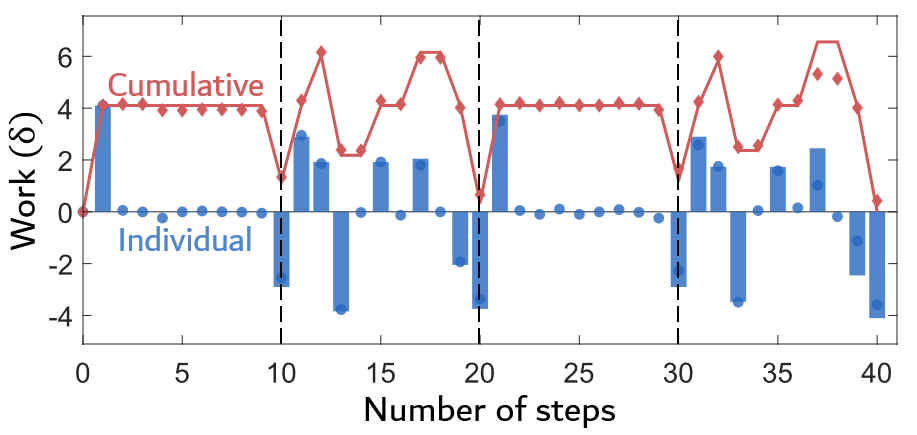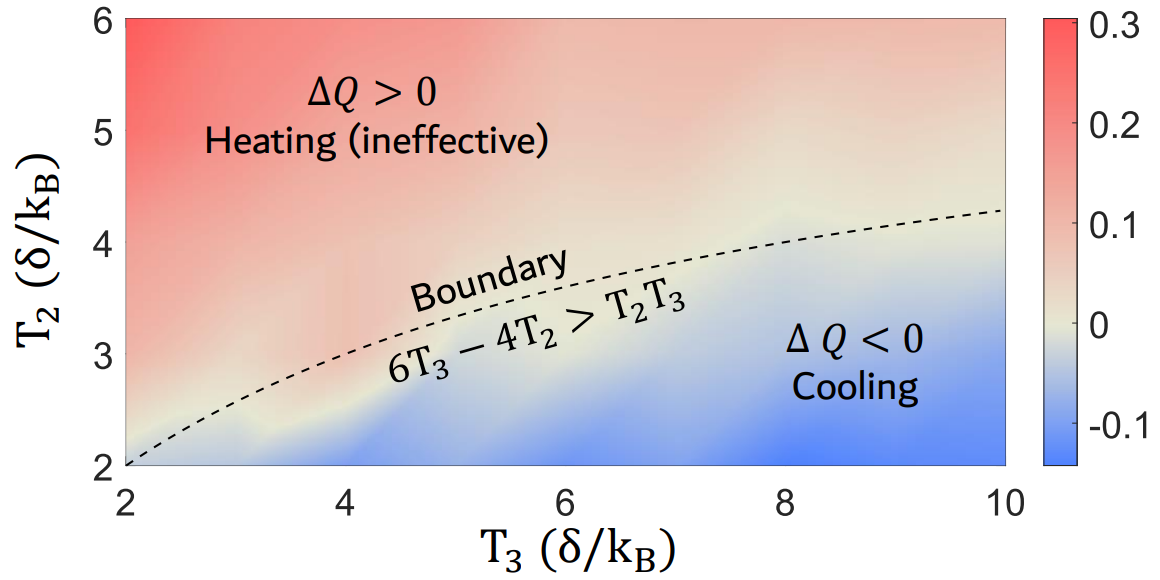The refrigeration process is a significant area of research in thermodynamics, widely used in everyday life, as well as in industrial and scientific fields. For example, air conditioning and refrigeration offer coolness during hot summers, and refrigerator refrigeration makes it easier to preserve food.
The discovery of superconductivity in physics is closely linked to advancements in refrigeration technology. Moreover, most modern quantum computing platforms also rely on low-temperature environments. However, the refrigeration process usually consumes resources to work on the refrigeration system.

Associate Professor Dawei Lu’s research group from the Department of Physics at the Southern University of Science and Technology (SUSTech) has recently realized a self-contained quantum refrigeration that consumes no external work.
Their research, entitled “Experimental realization of self-contained quantum refrigeration”, has been published in Physical Review Letters, a top international journal in physics.
The notion that refrigeration requires no work originates from the study of quantum thermodynamics. Maxwell once proposed a refrigeration model based on intelligent beings, known as Maxwell’s demon. In this model, the demon can distinguish between the less active (lower temperature) and more active (higher temperature) particles in a system, and separate them to achieve refrigeration.
This was initially thought to violate the laws of thermodynamics. However, subsequent research revealed that this refrigeration model utilizes the information resources. As erasing information still demands work from the system, this type of refrigeration ultimately requires work to sustain it.
A truly work-free refrigeration operation was proposed by scientists Noah Linden, Sandu Popescu, and Paul Skrzypczyk [PRL 105, 130401 (2010)]. When they explored the minimum scale of the thermodynamic model, they developed a minimal refrigerator consisting of a spin-1/2 system based on quantum three-body interactions. The refrigerator functions through free evolution under three-body interactions, without the work of an external environment. This property is known as self-containment.

Figure 1. Self-contained refrigeration. The self-contained refrigeration can be achieved through the exchange of the populations of the states | 010> and | 101> when the energy difference of three spin-1/2 systems satisfies E2 = E1 + E3.
However, experimentally realizing a specific three-body interaction is challenging. To demonstrate this self-contained refrigerator, built on three-body free evolution, the researchers used quantum simulation techniques to break down complex evolution into multiple single- and two-body evolution operations. This complex evolution can be effectively replicated by executing these simpler operations sequentially.
Using a nuclear magnetic resonance (NMR) quantum simulator, they rigorously decomposed the three-body free evolution into 40 simple operations. They then used NMR technology to control the quantum system represented by the molecule to complete these operations in sequence. Finally, they realized the cooling of partial nuclei of the molecules. Due to the characteristics of the NMR system, some operations consume external resources to work on the system, while other operations store resources by working on an external system.
As these operations were performed step-by-step, the resources consumed and stored throughout the entire operation balanced each other out. No additional external work is required, so the refrigeration simulation process itself is self-contained.

Figure 2. Measured separate and cumulative work for the forty steps during the evolution. The total work sums up to zero when considering all individual work contributions.
Additionally, the researchers conducted theoretical and experimental analyses of the refrigeration process to determine its performance under various conditions and identified the requirements for effective refrigeration. They discovered that, apart from the component being cooled, a specific temperature difference must exist between the other two systems to facilitate effective refrigeration. This means the process is driven by heat flow. In classical terms, it’s akin to combining a heat engine with a refrigerator.
The heat engine part uses the heat flow from high-temperature bath to low-temperature bath to work, and provides this part of the output to the refrigerator. The entire process is achievable through free evolution in a quantum system. As a result, even though this self-contained refrigeration process operates without external work, its functioning still consumes some resources, which meets the requirement of the second law of thermodynamics.

Figure 3. Experimental heat transfer as the function of temperatures of two cooling systems by fixing T1 the temperature of the cooled system. The blue represents its effective cooling, and the red represents failing. The dashed line indicates the predicted boundary between the two cases.
This study’s analysis of energy changes, such as work and heat in NMR systems, serves as an example for further experimental research in the field of quantum thermodynamics. It is also helpful for analyzing thermodynamics in other quantum systems. Moreover, such a quantum-level refrigeration process that requires no external work may be used in quantum computers. By cooling the qubits, the probability of errors in quantum computing can be reduced, which will enhance computational accuracy.
Keyi Huang, a master’s student from the Shenzhen Institute for Quantum Science and Engineering (SIQSE) at SUSTech, is the first author of the paper. Associate Professor Dawei Lu and Research Assistant Professor Xinfang Nie from the Department of Physics at SUSTech are the corresponding authors, and SUSTech is the first affiliated unit.
The research was supported by the Ministry of Science and Technology (MOST), National Natural Science Foundation of China (NSFC), Department of Science and Technology of Guangdong Province, Science, Technology and Innovation Commission of Shenzhen Municipality, and SUSTech.
Paper link: https://link.aps.org/doi/10.1103/PhysRevLett.132.210403
To read all stories about SUSTech science, subscribe to the monthly SUSTech Newsletter.
Proofread ByAdrian Cremin, Yingying XIA
Photo ByDepartment of Physics